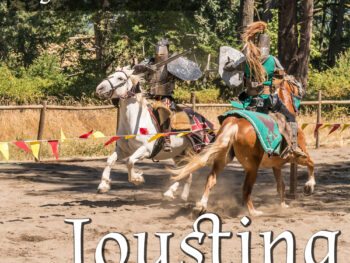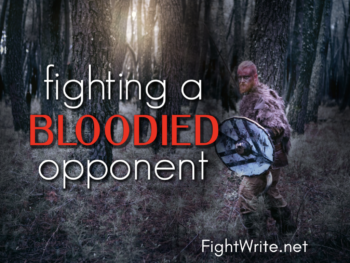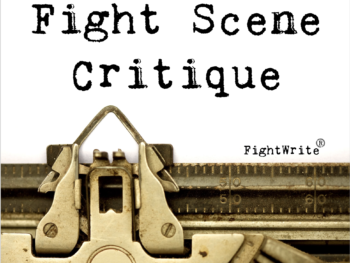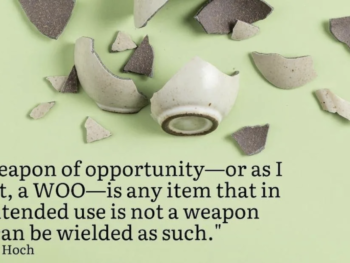In our last Writing Action we looked at judo responses to toilet paper theft. We looked at the video and ways to write what was seen in a particular throw. Today we are going to look a little closer at writing action and what you should and shouldn’t include. Here was my summary of my throw of sensei Zach: (go to 1:37)
Before Carla could gasp, Zach was on her. He took hold of the pack of toilet paper Carla held close to her chest and pushed. The crinkling plastic on the rolls held her weight for just a moment. Then, with a rip, it gave way.
Carla reached out for balance, putting her arm around Zach’s waist. Her body turned with a backward lean, jutting her hip out between them. Zach continued forward with a violent press, his arm still outstretched.
With that final push, Zach’s shoes lost their hold on the cement with a gritty shish. His chest fell forward, his legs flew up.
Zach’s face hit the pavement with a sharp slap and the air in his chest chuffed out as his weight crashed down. At the sound of a snap, he cried out and rolled to his side. His right hand angled in sharply. His thumb laid against inside of his arm.
Zach cradled the break and rolled side to side. Spittle flew out in tendrils from between his gnashing teeth as he hissed in pain. A dark stream of blood ran from his forehead down the side of his face and into his thick tangle of curly hair. As he rolled back and forth the blood splodged the sidewalk with inky blots.
Technical Lingo in Writing Action
We looked at the actual blocking in the scene in the last post. Today, let’s look at the words of the example scene.
First, I don’t know if you noticed, but the serendipitous throw is not given a name. There are a couple reasons for that. One, it wasn’t an actual throw. It was more of a fall that worked out great for Carla.
But, let’s say Carla is a champion judoka and used her skill to throw Zach. Even then it’s not a good idea to use the technical name of the throw. Using the proper term for a technique is a perilous writing habit. You risk excluding readers without knowledge of that skill and taking them out of the moment. (I talk about this in Chapter 4 of my book.) That is why I didn’t include the names of any throws in the video. I wanted the focus to be on the action.
For the sake of argument, let’s put the name of the technique in the writing:
With that final push, Zach’s shoes lost their hold on the cement with a gritty shish. The tomonage upended him: his chest fell forward, his legs flew up.
(Judokas, stay with me…I know what I did.)
Explain it, don’t name it
First, as you read that to yourself, did you easily read the word tomonage. Did your brain try to give it a French pronunciation at the end or did it assign it more of an English slant? Both of those are incorrect by the way, not that it matters. The correct pronunciation doesn’t matter as much as the fact that your brain paused for a second to assign a pronunciation to this newly encountered word. The pronunciation is: toe-moe-nah-GEE. And by the way, that throw is totally not a tomonage. It’s an uki goshi. Did you know that? Neither does your reader unless they do judo. How many of your readers are judokas? Well, how many people do you know who are judokas? It’s a small percentage of the population.
Explain it, and name it
Not only do words peculiar to a fighting style isolate readers, they generally don’t even describe the movement very well. Uki goshi means “floating waist or hip.” That tells the reader nothing. The only exception I give to this is if the technical word is organic to the scene. If your character is, for example, learning or teaching judo, of course the proper word should be used. The Princess Bride is a great example of this. In the fight scene between Inigo and Whestly as the Dread Pirate Roberts, tons of technical jargon is used. But, it’s used to show the education of each dueler and the duelers are trying to out do each other with their knowledge! But, even then, Morgenstern talks about the dust flying off their ground with their foot movement, so you have have an idea of the action that might be associated with the techniques the characters mention.
Ok, now, second, I tried to give a fair amount of attention to the injury. You know why? Because injuries are what really pull the reader in. Injuries and the sights and sounds associated with them trigger a particular set of neurons in the brain! #truth. And, I will tell you more about that in the next round. Get ready to science!
Here’s the movie version of the Princess Bride scene I mentioned. If you haven’t seen this movie, get off the computer and go watch it. It’s essential to life! Otherwise, ff to 4:16 to understand what I was talking about!
Until the next round at FightWrite™.net, get blood on your pages!!!









